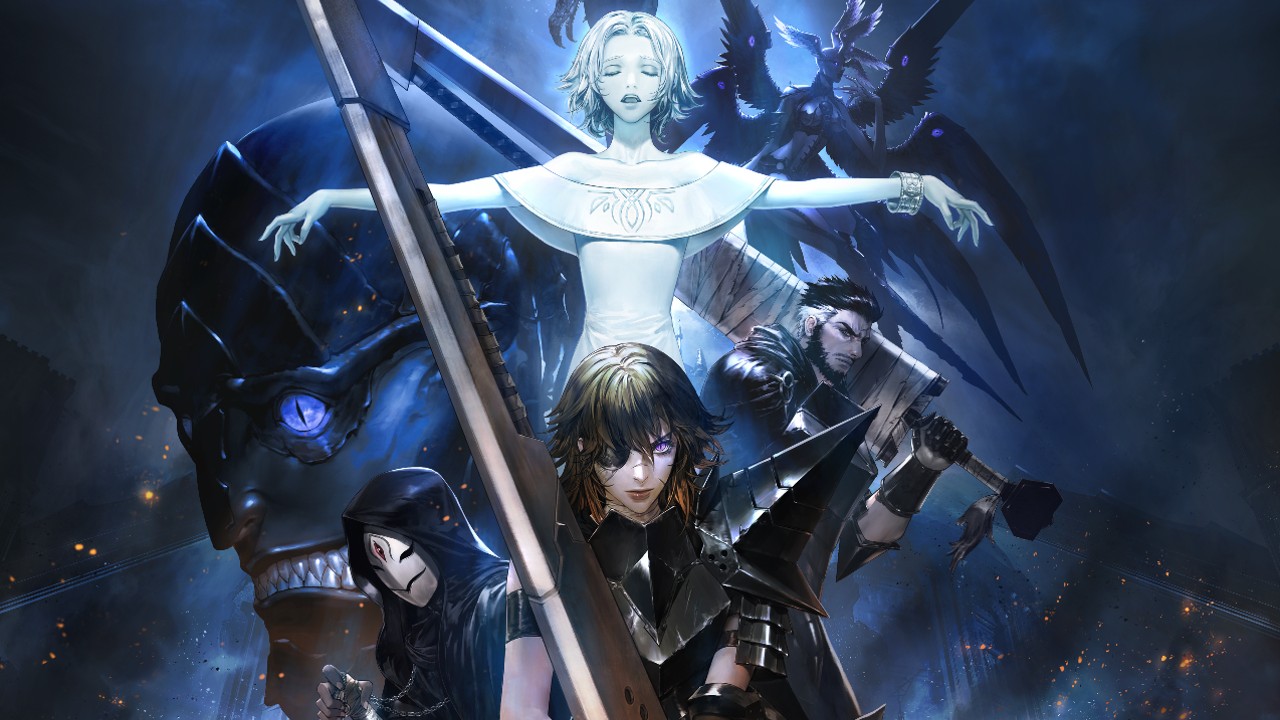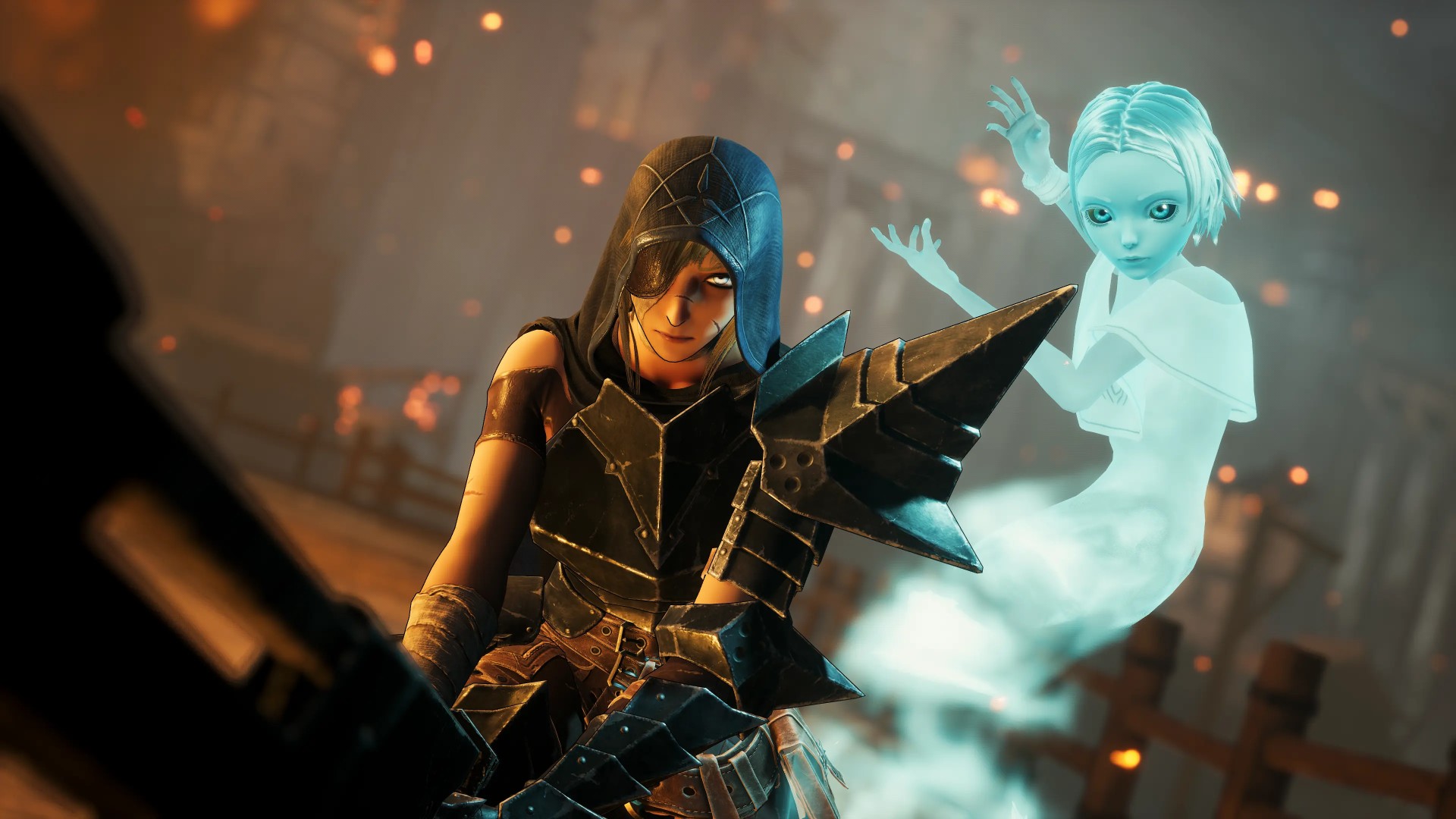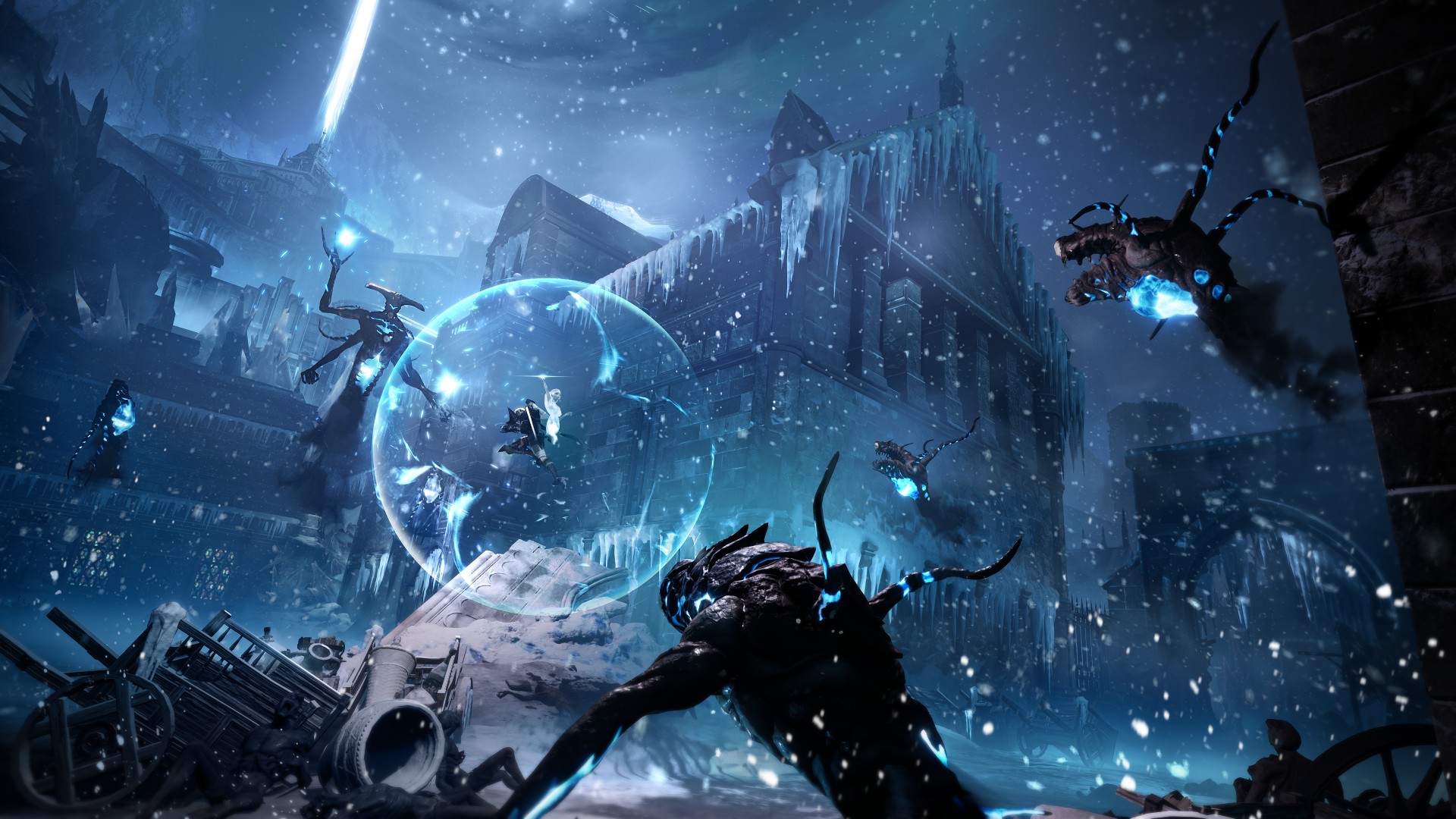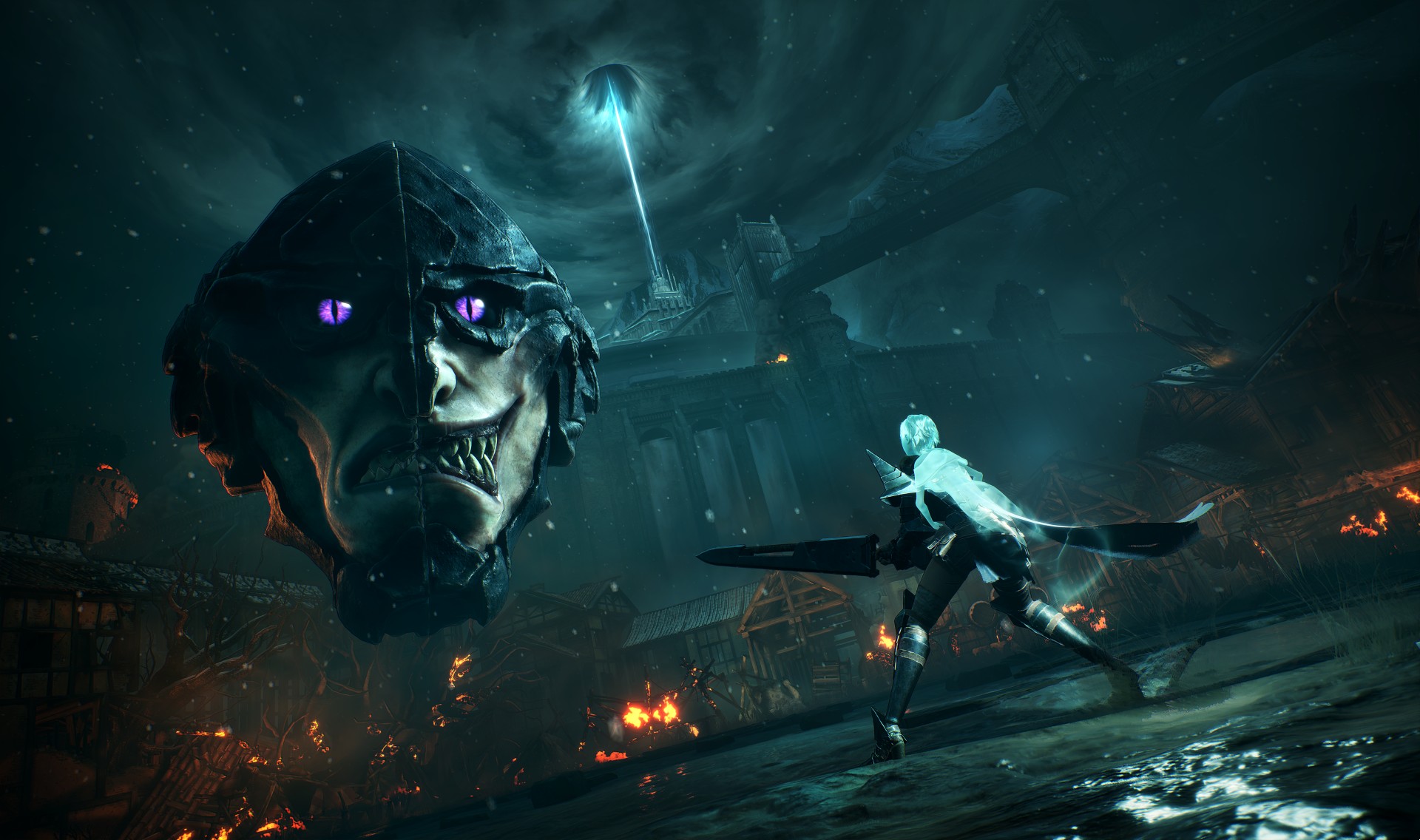They say that imitation is the sincerest form of flattery, but that’s not always true. Soulstice wears its inspirations on its sleeve but sometimes struggles to use those inspirations to create something truly new or unique. There’s a robust combat system at its center, but the overall experience suffers from padding and repetitive design.
Meanwhile, the lore-heavy story is filled with good ideas that aren’t always executed well. That’s not to say Soulstice can’t be fun or compelling. When combat really clicks, it can be an absolute blast, and boss battles really crank the challenging combat up to 11. What results is a strong character action title that should appease fans of the genre but doesn’t really break any boundaries.
Soulstice Review: The Guts to Survive
A single glance at Soulstice is all you need to understand it’s heavily inspired by the seminal manga Berserk, created by the late Kentaro Miura, as well as the aesthetics of Dark Souls, which was, well, also inspired by Berserk. It was something that got us excited for the game in the first place.
The narrative revolves around a pair of sisters named Briar and Lute, who together make a sort of supernatural being named a Chimera. Chimeras serve the Holy Kingdom of Keidas and combat horrific creatures known as Wraiths, which cross over something called the Veil and consume humans. Soulstice opens as the sisters arrive in the city of Ilden, where a massive tear in the sky has unleashed hell on the inhabitants.
The game’s narrative is a mostly solitary experience that pits Briar and Lute against a city filled with horrors, revealing their backstories in a series of flashbacks. There are a few other interesting characters you’ll meet along the way, and Soulstice is filled to the brim with lore on locations, enemies, and organizations, all of which can be read about in your journal. Despite how focused the story is on Briar and Lute, there is a sense of the larger world outside, and that the sisters are simply a cog in a massive machine.
The actual storytelling, however, is a bit of a mixed bag, as Soulstice draws heavily from anime tropes. There’s the scarred old warrior with a heart of gold, the evil religious organization that has ulterior motives, and the wild transformations. The siblings’ tragic past also feels far too reminiscent of anime like Demon Slayer or Fullmetal Alchemist, especially in how it’s all presented. While the core arc is enjoyable, it all feels fairly predictable and some of the big “twists” can be seen a mile away.
Like most character action games, Soulstice is split between combat segments, platforming, and puzzle solving, although combat takes up the biggest chunk. You directly control Briar, who wields a massive blade that can transform into other weapons. Lute, on the other hand, attacks on her own, can use counter abilities and can put up two different aura fields needed to fight enemies and solve puzzles.
Briar has light and heavy attacks that can be comboed, while Lute’s counter can be used whenever you see the icon with the button appear over an enemy. Lute can also use blue and red fields to fight Wraiths and Corrupted; Wraiths glow blue and can only be damaged when the blue field is up, and Corrupted glow red, only receiving damage when the red field is activated. Corrupted can also be possessed by wraiths, forcing you to mix and match fields quickly.
The system is surprisingly deep and complex, rewarding you with new weapons and moves at a steady clip. By and large, it’s fun and can easily be compared to something like Bayonetta or Devil May Cry, encouraging you to stay mobile and dodge attacks, while finding the time to unleash your own combos. It consistently introduces new weapons, enemies, and mechanics, and there’s a good difficulty curve that slowly increases as you progress.
Soulstice has over a dozen different enemy types, and part of the challenge is making sure you have the right field up to deal with these various types. You can’t leave a field up indefinitely, however; if Lute has it up for too long, she’ll overcharge and be out of commission for a few seconds.
Successfully landing combos without getting hit also gives the sisters “Unity” and when unity is high, you can unleash stronger attacks and enter a beast-like Rapture mode that lets Briar unleash devastating attacks.
There’s a ton of variety in terms of different playstyles in Soulstice, and Briar and Lute’s abilities level up independently, using two types of experience. Defeating enemies, breaking objects, and finding glowing crystals can yield red and blue shards. Leveling up Briar grants new combos and attacks, or increases the proficiency of specific weapons. Leveling up Lute will open up new counter options, make her fields more effective, or give you new defensive options.
Finding experience is the main reason for exploring, and there are massive crystals scattered throughout each level that can yield extra, on top of secret challenge missions you can find. The biggest issue with Soulstice, however, lies in the actual level design outside of battles.
Ilden is a gorgeous gothic city, but it all runs together after a while. You spend literal hours running through and past the same gray hallways, sewers, and houses. By the same token, you’ll solve a lot of similar puzzles over the 18 or so hours it takes to beat the game. I consistently found myself growing tired of the drab visuals of the city.
There were also a few small technical issues I ran into on PC. I had virtually no problems during gameplay, but I consistently had issues with things suddenly getting very choppy during cutscenes, especially ones with more visual effects.
During exploration sections, the camera is set at static angles, but you’re able to control the camera freely in some battles. These camera options make Soulstice feel like an Xbox 360-era action game, but not always in a good way. The fixed camera can make it hard to find secret pathways and hidden objects, and the free camera simply isn’t as responsive as it should be.
These hiccups don’t ruin the experience by any regard, but there are lots of instances where the view will be obstructed by an enemy during combat, or the camera might get stuck for a second on a corner, adding a bit of frustration to the mix.
Soulstice Review — The Bottom Line
Pros
- Deep combat system that provides a ton of playstyle options.
- Great presentation and sense of style that draws heavily on Berserk.
- Good difficulty curve that consistently introduces new enemies and elements.
Cons
- Lack of variety in terms of environment and puzzles.
- Small technical issues during cutscenes
- Story relies too heavily on tropes and predictable twists.
Soulstice is a completely serviceable action title that contains plenty of thrills and some stellar combat, even if its story and presentation fail to rise above its inspirations. Nothing about Soulstice will redefine the character-action genre, but if you’re hungry for a deep and challenging experience, it should fit that need nicely.
[Note: Modus Games provided the copy of Soulstice used for this review.]











Published: Sep 19, 2022 05:59 pm